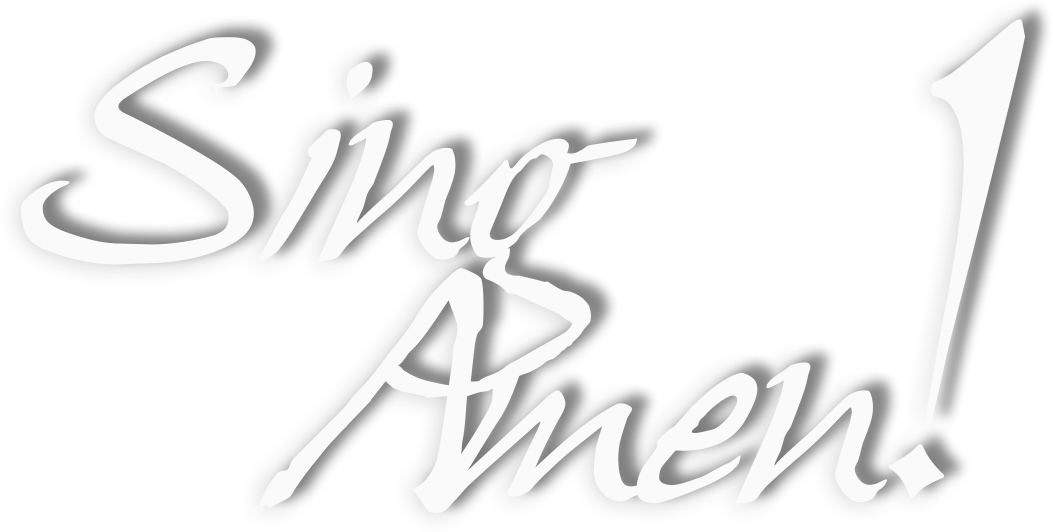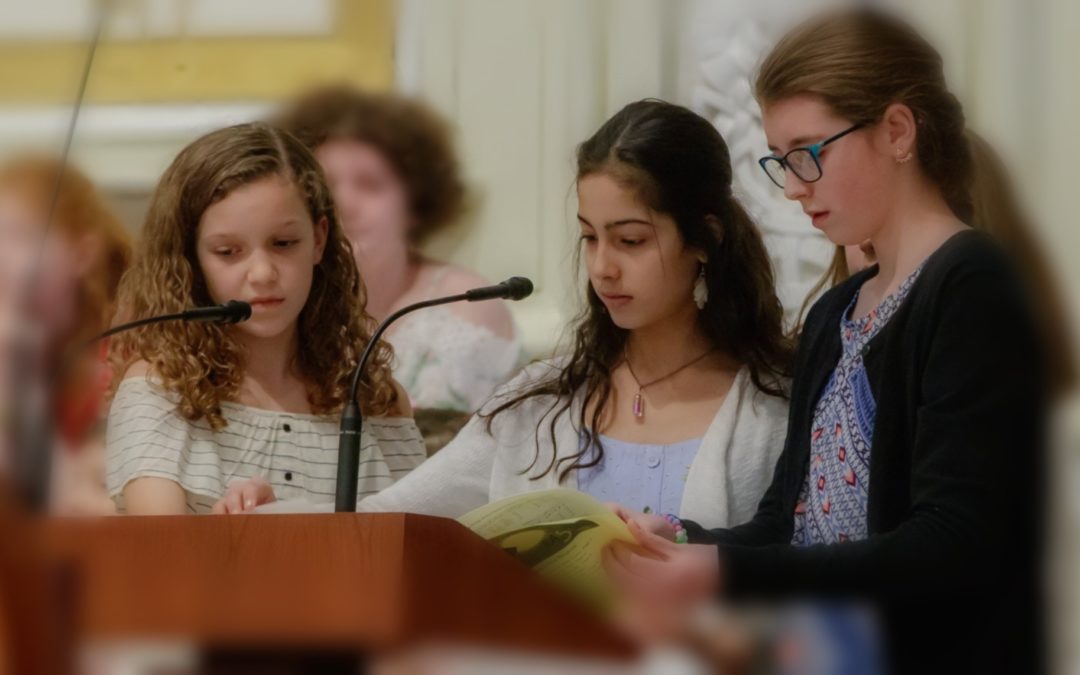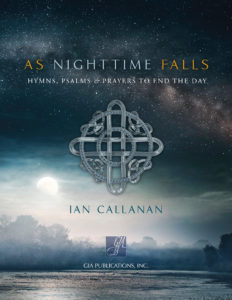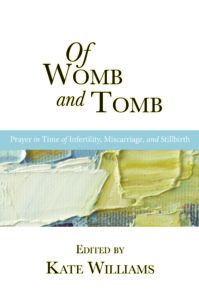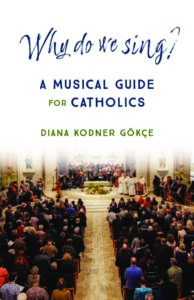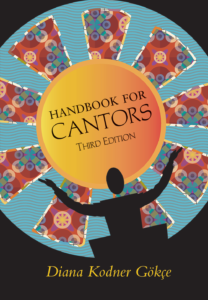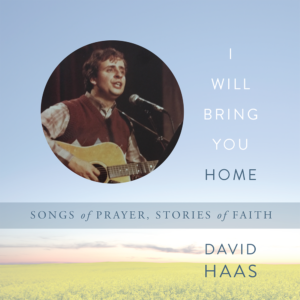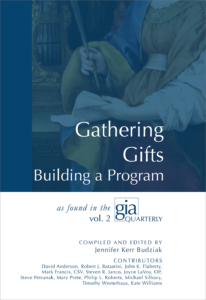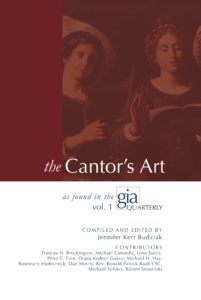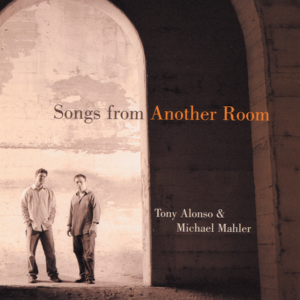Where does the next generation of cantors and music ministers come from, if not from the youngest singers now?
An important part of a strong youth music program is keeping your children growing and challenged and eager to keep learning. It can be challenging for seventh and eighth graders to sing in the same “children’s” choir as second and third graders; totally aside from the reality that they at this point are able to pick up songs and skills more quickly than the youngest children, they are on the cusp of something not-quite-childhood any more, and being treated as children can…grate. (Or so my own middle-school-aged offspring, whom I no longer refer to as a “child,” tells me.)
This, then, is the perfect opportunity to introduce the cantor ministry to your young singers.
Obviously, it is not as simple as just putting these young people up at the microphone to “sing solos”; this process only works in the context of an ensemble where the choir’s mission and function of aiding and supporting the assembly’s song has been foundational since day one, and in a parish where a healthy adult cantor ministry is the norm and model. And I certainly would not as a rule ask one middle-schooler to be “on” for serving as cantor for an entire liturgy. But the process of training youth cantors can be an important one for the grown of these young singers in their ministry.
A few guidelines:
- Beware a system where only the singers with the “most beautiful” voices “get to” cantor. Bob Batastini, former senior editor of GIA, has said that in his opinion anyone who can carry a tune and who has a fairly pleasant voice has what it takes to be a cantor. If we train them young in the ministerial side of a cantor’s work, they will be that much more prepared to take on more and stronger leadership as they get older. In my group, any student who reaches seventh grade and wishes to serve as a cantor gets the same training as any others. Those with smaller voices can be paired with other stronger singers. And the whole work of call-and-response, gesturing, eye contact, and negotiating microphone distance is just as much of a challenge to the big-voiced as those with less confidence.
- Use your children’s choir liturgies as the perfect opportunity to let your young cantors get experience, but schedule an “adult” or more experienced cantor for those liturgies as well. The choice of adult is also key—it needs to be someone who him- or her-self understands that their role even more than at any other time is to do what is needed to facilitate the assembly’s song and support the children, and otherwise to be as invisible as possible. A younger face can be encouraging and supportive to the group, but more important is the adult cantor’s attitude and approach to working with children. (We are fortunate in my parish to have an elementary school teacher among our cantors, and he is a treasure—he instinctively knows when he can back off and let the kids take leadership, and he never hesitates to do so.) If your adult voice can be a tenor or light baritone, this is even better; even aside from the advantage to having a male role model in a group that too often has a hard time building membership among boys, the fact that your adult will generally be singing in a different octave from your choral singers and/or youth cantors will assure that their sound will not be covered.
- Within each liturgy, choose a few specific songs or moments for your youth cantors to lead. Start out with only one or two in a liturgy; as your young cantors grow more assured, this can increase. Choose something very well-known, with a simple part for your young singers; I find that echo-based songs or call-and-response music are ideal for this.
- When you begin to teach gesture to your new cantors, do not separate them from the rest of the choir, but have the entire choir begin to learn together, even if your second graders won’t be doing this with an assembly for another 5 years. Work cantor gesture into the warmup; an exercise of “Inhale….sing” coordinating with arms rising on the breath and opening at the onset of phonation will set them up for healthy gesturing as they grow, as well as helping connect their sound to their breath and their body. Make learning the cantor gestures a part of the singing process. And then when it’s time for cantors to sing on specific songs, first have them practice with you, but then have them lead the “assembly” (your children’s choir) on their parts. This is both good for the cantors themselves and for the younger children you hope will see their peers stepping up into leadership and begin to see themselves in such a role. Again, call-and-response songs like “Wade in the Water,” “God is Still Speaking,” and Tony Alonso’s “Glory in the Cross” are excellent choices for new cantors to cut their teeth on.
- If your assembly is strong on your parish’s settings of the eucharistic acclamations, but not quite strong enough to sing them without some leadership at the microphone, you could consider having your young cantors lead those as well—but only if they are so well-known by your young singers that they can sing them effortlessly and from memory; nothing inhibits the assembly’s singing more than an insecure cantor (of any age!).
- Start with your younger cantors in pairs; after a few times out, shift to solo voices leading short lines on call-and-response pieces. Only much later would I put a young voice on a full verse of a psalm or song.
Do any of you have an ongoing youth cantor program? I would love to hear what works for you!
Photo Credit: Mike Lyons
